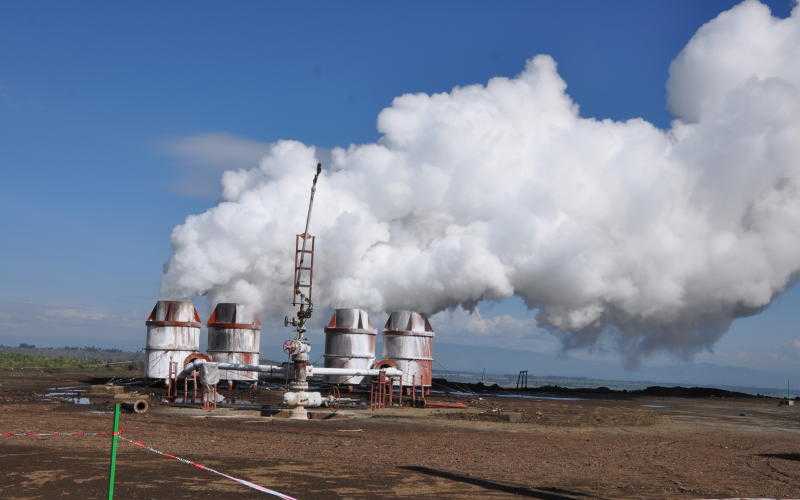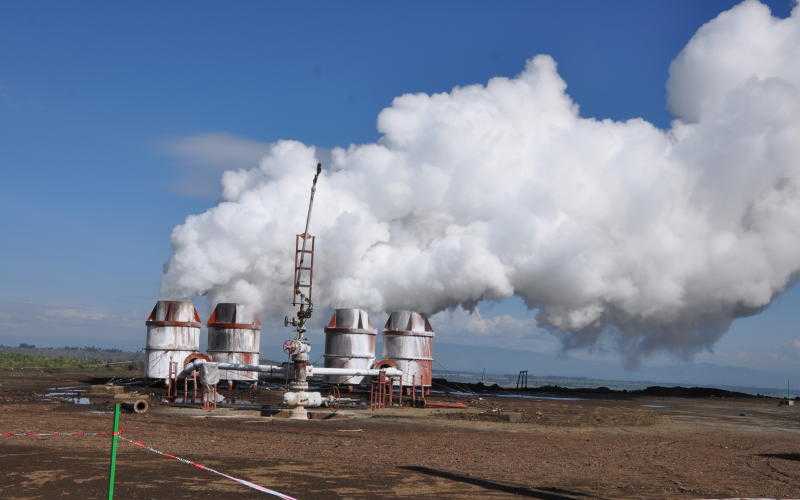 By
Macharia Kamau |
By
Macharia Kamau |

Kenya’s electricity sector continues to be under the spotlight for the high cost of power, which is hurting domestic and commercial users.
The binding Power Purchase Agreements (PPAs) between power producers and Kenya Power have been criticised for their lengthy nature and in many instances skewed in favour of the former.
This came to the fore when President Uhuru Kenyatta ordered a review of all power contracts with thermal power producers, with a view of bringing down electricity costs.
One such agreement involves American firm Ormat Technologies.
The firm’s PPA with Kenya Power has raised eyebrows over its lucrative nature, especially when compared with other power producers using the same energy source.
Ormat's lucrative deal attracted the attention of the Organisation for Economic Co-operation and Development (OECD). According to reports, the costly power that it sells to Kenya Power informed the probe commissioned by OECD.
Ormat, through its subsidiary Orpower 4 Inc, operates a 150 megawatt (MW) geothermal power plant at Olkaria.
According to the PPA between Orpower and Kenya Power, which the mother company filed with US authorities, the power producer is paid an energy charge of Sh15 ($0.0156) per unit (kilowatt hour – kWh) of electricity supplied to Kenya Power.
This pricing is costly when compared to wind energy, with producers getting about Sh9.8 per unit and solar averaging Sh12 per unit. However, the government owned Garissa Solar plant pockets Sh5.5 per unit.
While cheaper than what thermal producers charge, with some of them being as high as Sh30 per unit, it is expensive when compared with what other geothermal power plants are paid for their power at about Sh8 per unit.
The Paris-based news outlet Africa Intelligence reported that the US Department of State has been asked by the OECD’s Anti-Bribery Convention to open an administrative inquiry into Ormat’s contract with Kenya Power.
Owing to the preference for geothermal power, which is cheaper than sources such as thermal plants, the company is among those that see almost all the electricity it produces taken up by Kenya Power.
It is the second-highest-paid power producer after KenGen, which reported revenues of Sh49.56 billion.
Almost all the revenue was from the sale of power generated by its fleet of geothermal, hydro, wind and thermal power plants with a combined electricity generating capacity of 1 631MW.
In the year to December last year, for instance, the company was paid $121.66 million (Sh13.13 billion) by Kenya Power for the power supplied to the grid, accounting for a substantial chunk of its revenues.
Kenya, the firm notes, remains a key market despite having plants in major markets, including back at home in the US.
“In 2019, KPLC (Kenya Power) accounted for 16.3 per cent of our total revenues,” said Ormat in its annual report.
“We consider Kenya an important location for our future growth, and we are pursuing geothermal and solar opportunities in the country.”
It is not the first time that Ormat Technologies’ dealings in Kenya have been under scrutiny, having been probed for price-fixing in 2017.
It was investigated by the Ethics and Anti-Corruption Commission and the Energy and Petroleum Regulatory Authority (Epra) for allegedly overstating the amount of electricity it sells to Kenya Power.
The 2017 investigations, however, cleared the firm, but there were concerns raised by the regulator on the nature of communication between the National Control Centre and Orpower’s power complex at Olkaria.
EACC had in a letter to Epra requested the regulator to look into possible malpractice by the management of OrPower 4 Inc in relation to power purchase transactions with Kenya Power.
The anti-corruption agency was working on a tip-off from an informant, who claimed that the company had over the past years been misreporting its capacity to Kenya Power, resulting in over payment, contrary to the provisions of the PPA between the two companies.
In its investigation that saw Epra look at the power production by Ormat and uptake by Kenya Power, the regulator said there were no anomalies but highlighted certain issues that the two companies needed to work to improve transparency in their transactions.
Communicated verbally
According to a confidential report that Epra did for EACC, the amount of power that was fed to the grid by Orpower’s plants was usually communicated verbally as opposed to automatically being captured by the system.
“The following miscellaneous gaps were identified in the data collection and communication process,” said the report.
“(There was) the lack of real-time data capture at NCC (National Control Centre) for this power plant leaves NCC to accept data communicated verbally or through e-mail. This could lead to erroneous data for the invoice inputs.”
It also noted that the NCC had its weaknesses and could not, in certain instances, monitor power plants at the ground level and only captures this information when electricity from the pants is loaded to high voltage transmission lines.
NCC located on Nairobi’s Juja Road is the nerve centre responsible for Kenya’s electricity systems.
“It is difficult for NCC to know with certainty when the unit at OrPower has been fully or partially offloaded due to the lack of a suitable data acquisition and control system for the 11kv (transmission) systems. In case this was to happen, the consequence would be challenges of operating the interconnected system and the possibility of the Orpower4 Plant to disregard some critical instructions from the NCC,” said the Epra report.
Ormat and the Kenyan arm Orpower have also had run-ins with the Kenya Revenue Authority (KRA), which last year demanded more than $228 million (Sh24 billion) in tax arrears.
Ormat in its annual report for the financial year to December last year said it had disputed KRA’s computation and the two are currently in discussions to resolve the matter.
“A recent example is the assessment letters we received from the KRA with respect to our operation in Kenya in relation to the 2013 to 2017 tax years in which the KRA demanded we pay approximately $228.0 million (Sh24.6 billion), including interest and penalties ($177 million – Sh19.11 billion – principal),” said the company in the annual report.
“In January 2020, the company filed a formal objection… contesting KRA’s finding. The Company is currently at different stages of discussions with KRA on the matters included in KRA letters of assessment and preliminary findings… and believes its tax positions for the issues raised during the audit period is more-likely-than-not sustainable based on technical merits under Kenyan tax law.”




No comments :
Post a Comment